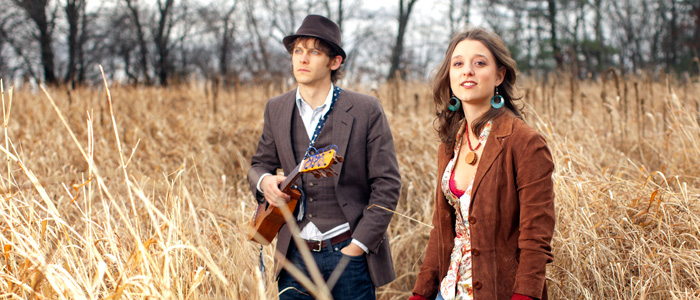
“Music was just around, everywhere, in the air, and it was so vibrant, like nothing I had every heard before!” exclaims David Wax. Speaking by phone from his Boston home, Wax is explaining his first encounter with Huasteca music in a rural town in the Huasteca Potosina while completing a college summer program. (The Huasteca Potosina, located within the state of San Luis Potosi, is renowned for its lively huapango music, which is characterized by falsetto vocals along with violins, guitars and smaller stringed instruments called jaranas).
That summer later led to a later year-long stay in Mexico where Wax happily devoted himself to the music. In Jalapa, Veracruz, where he was living, he immersed himself in its percussive, son jarocho with its European, indigenous and African roots, and also travelled all over the land, learning different sones mexicanos along the way.
Wax has continued to develop his interest and passion for traditional Mexican music through his band, David Wax Museum, which includes Wax on various jaranas and requinto, Suz Slezak on fiddle and jawbone, and a small ensemble of regular multi-instrumentalist collaborators who add accordion, bass, percussion and other instruments. The name of the band, which started as a joke based on Wax’s last name, just “stuck” he says, because of their interest in old music: “It’s not that that’s the music we are trying to make, but it is the music that inspires us.”
Today, the band is revolutionizing the American folk music scene by finding the Mexican heart in Americana (and vice-versa) with what Wax terms “Mexo-American folk music”. The songs he writes are in English, but the rhythms are rooted in both lands. Having experienced the band at SXSW 2011, I can attest that it’s a potent and captivating beat, to which your heart-corazón may move you to joyfully kick up your heels or do a little zapateado-style foot-stomping.
Their brand-new recording, he says, consciously mixes and explores the line between Mexican and American strands and influence: “We picked songs that started as Mexican folk song and give them treatment that takes it out of that context, like drums or electric guitar; or we take songs that started out American and give them treatment like playing them with jarana jarocha or add the jawbone and other rhythms to give them a more Mexican stamp.”
Wax is excited about the direction the music is taking the band: “We are able to add a lot of joy and exuberance and freshness into American folk and rock. It’s a great creative place to be in – working with music where you can’t rely on old assumptions on how you have to play.”
He also wants to keep sharing what he first experienced that summer in the Huasteca: “We fail to understand how culturally rich Mexico is. I started out because I feel that there’s great regional richness in Mexico that Americans for the most part are pretty oblivious of – if we can just have a small part in people having more positive associations with Mexico I think there’s a lot to be gained from that.”
The David Wax Museum will perform February 24 at the University of Chicago
Check out the archives of Beat Latino, Catalina’s radio show (and like Beat Latino on FBtoo!) to explore the roots as well as the trends in Latin and world music.
Related posts:
- National Museum of Mexican Art Celebrates Silver Anniversary with Dia de Muertos XXV This year’s exhibit, Dia de Muertos XXV, curated by Cesáreo…
- To Mexican? American? or NOT?! I’m straight up over it. Call yourself whatever you want,…
- Interview: Rana Santacruz, Alt Folk Mexicano Rana Santacruz talks to Gozamos about his unique take on…
